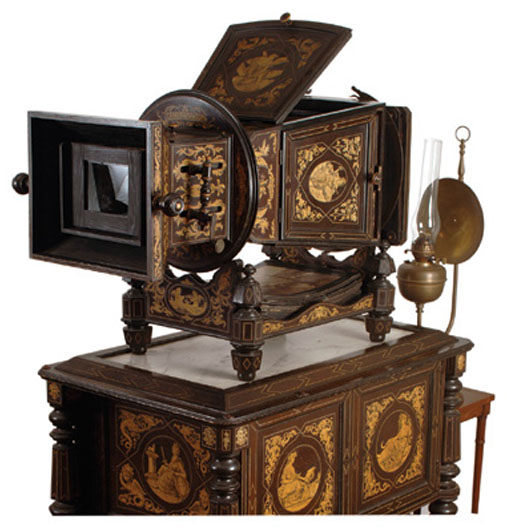Alethoscope, megalethoscope 1861 - early film technology
The Megalethoscope was an optical apparatus developed by Carlo Ponti of Venice prior to the year 1862. It was an improvement from the Alethoscope that he patented in 1861.
The device utilized photographs viewed through a large lens to create the illusion of depth and perspective. The photographs, made from albumen, were either lit from an internal light source, like an oil or kerosene lantern, or from natural light through an arrangement of doors. To enhance the visual effects, the photographs were specially prepared and made translucent, colored, and perforated.
Despite being often confused with the Stereoscope, which had a different design and impact, the Megalethoscope and Alethoscope had the capability to give an illusion of depth through chromostereopsis. The Megalethoscope was an important precursor to the motion picture technology that emerged in the late 19th century.
The Megalethoscope and Alethoscope may have been replaced by the motion picture technology developed by the Lumière brothers and Thomas Edison, but they remain an important part of the history and evolution of motion picture technology.



Comments
Post a Comment